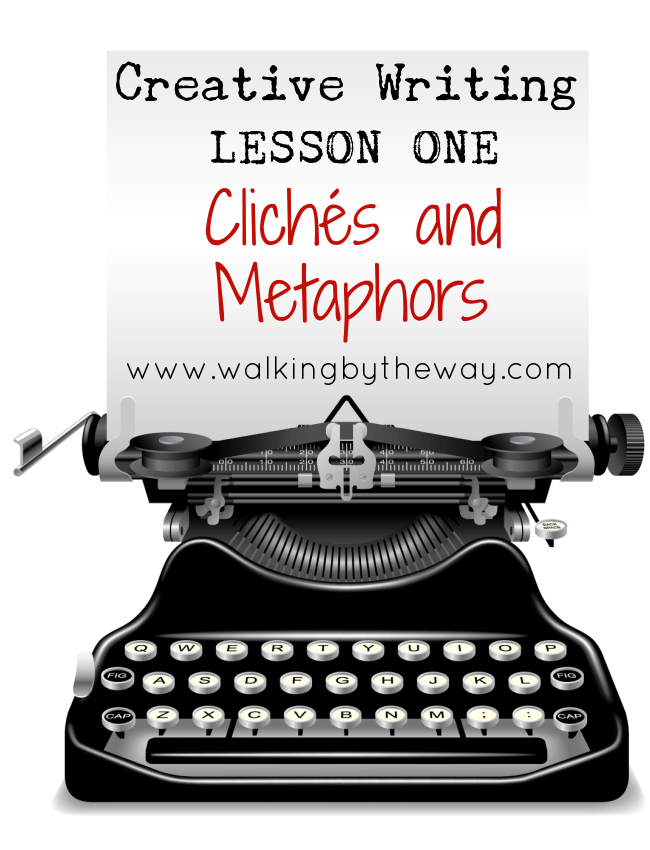
This first creative writing lesson introduces cliché and metaphor.
Creative writers need to understand these two terms.
Learning About Cliché
A cliché is easy to write. It requires little thinking on the part of the writer. It requires little thinking on the part of the reader.
I want my students to consider this as we learn to wield words. We want to impact our readers; we want them to think.
I usually begin my first creative writing class with a discussion of clichés by opening with Eve Merriam’s poem.
What is a cliché? It is an overused phrase. It’s worn out. It’s boring to read.
Create a list of clichés together. Discuss them.
“Easy as pie.” Has anyone in the class made a pie? Was it easy? When someone says “as easy as pie,” are you forced to stop and think? Do you picture a pie? Probably not.
Learning About Metaphor
On the opposite side of the writing meter, we have metaphors. Metaphors are fresh. A metaphor is a connection, a comparison between two unlikely ideas.
Metaphors require deep thinking on the part of the writer and reader. It causes both the writer and the reader to think of the topic in a new way.
When I introduce metaphor for the first time to a class, I discuss Emerson’s great quote, “The poet has a new thought: he has a whole new experience to unfold . . . “
We want to give our readers experiences to unfold, and metaphors can help us do it.
As we continue to discuss metaphor, I gently remind students that their metaphors must make sense. You could write, “Love is a refrigerator.” But, you must extend it by making a logical connection between the two ideas, and that would be a difficult task.
To continue explaining metaphor, my class will read through poems with examples of metaphor (and simile); we discuss how and why the comparisons work.
Creative Writing Lesson Plan: Cliché and Metaphor
- Read “A Cliché” by Eve Merriam.
- Discuss what a cliché is and why you should avoid them like the plague.
- Complete cliché page. My students usually do this this in pairs.
- Discuss metaphors and why they are grand.
- Read “Metaphor” by Eve Merriam. I use a file folder and piece of paper to illustrate this poem as I read it. Yes, I literally fold the paper and read at the same time. This simple action helps creative writing students to visualize the importance of a good metaphor.
- Read “Words” by Pauli Murray. Again, I use real visuals. I toss pennies in the air as I read each type of word, and I throw down $10 when I get to the part about hoarding words.
- I read the “Metaphor Poems” page to them without giving them the hand-out and without telling them the titles of the poems. They try to guess the title of each poem.
- We read over the assignment sheet for Week One. I make sure that everyone understands the assignments, and I make time for questions.
Creative Writing Lesson Printables for Cliché and Metaphor
If you’d like a copy of the printables I used for this creative writing lesson, subscribe to the blog using the form below. (Make sure to check your spam for the confirmation email.)
You’ll receive a file with the syllabus, poems for discussion, cliché worksheet, assignments for the first week, and quotes for copywork.
More Creative Writing Lessons
If you are looking for more creative writing lessons, try these:


I know it is probably me but when I click on the image for this or any of the other weeks I can’t get it to download. I think my son will like it.
Thank you for sharing.
Lori
Emailing you! 🙂